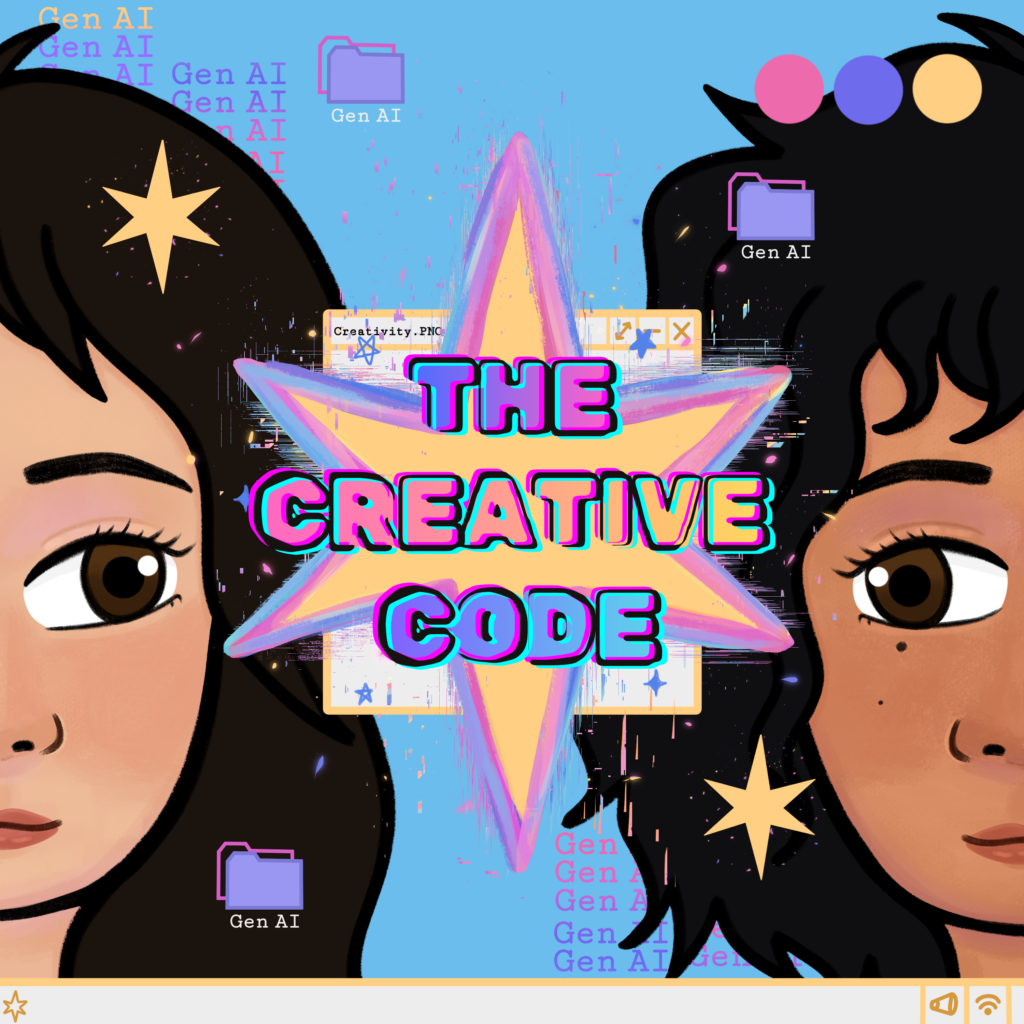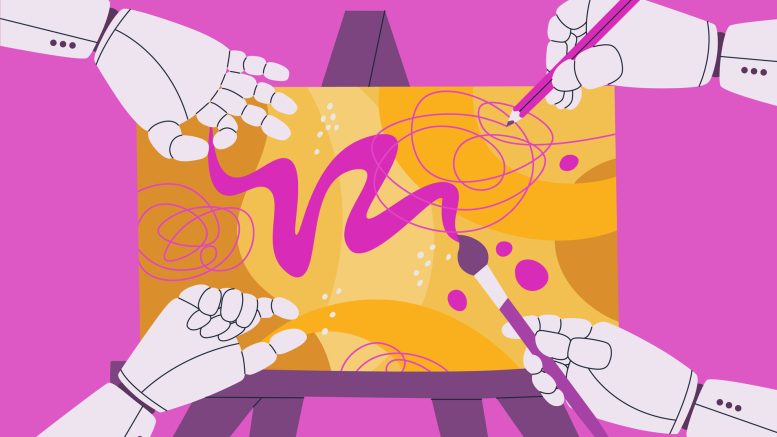California young adults probe the conflict between bots and humans in their podcast “The Creative Code.”
By Yuri Nagano, Capital & Main
This story is produced by the award-winning journalism nonprofit Capital & Main and co-published here with permission.
Freelance artist Nancy Aguilar has been feeling threatened by the emergence of generative artificial intelligence programs that are encroaching on the livelihood of those in her industry. Also feeling threatened is college student and aspiring writer Katelyn Chang. With support from San Francisco-based nonprofit Youth Leadership Institute, where they’re fellows, Aguilar, 21, and Chang, 19, detail the contentious relationship between human creatives and AI in a new podcast series called “The Creative Code.”
Fresno, California-based Aguilar and Bay Area-based Chang say creatives have already seen serious economic harm from generative AI use. They’ve found case after case of copyright infringement, sometimes resulting in lawsuits, after a year of researching the topic.
Aguilar frames the problem this way: Generative AI chatbots have been competing with human creatives for work. Chang said she would not have imagined a search prompt using generative AI to “create a profound AI-generated image that could rival that of legendary artists” in 2022. “Today this is our reality,” she said.
“People can’t even tell” the difference between human art and AI-made art these days,” Aguilar said. Artists have been worried generative AI would replace them and “take away opportunities.”
In Chang’s words, generative AI is “a type of computer program designed to create new things similar to what it has seen before based on the tons of data it’s fed.” Generative AI can create new images, text and other data that look like the examples it “learned” from. Some of the generative AI programs used for images include MidJourney and OpenAI’s DALL-E.
The duo’s concerns as expressed in the podcast are justified, said Ben Zhao, a computer science professor at the University of Chicago. Young creatives are moving away from art as a profession because they’re worried there won’t be jobs for them in the future, he said. Zhao said generative AI is a key reason why enrollment at art colleges is down nationwide.
Last year, Jeffrey Katzenberg, founding chief executive of DreamWorks Animation, said animated film costs will drop by 90% due to use of generative AI in the process. He added that in a few years it will take fewer than 10% of the number of artists required to create an animated film compared to a couple of decades ago, when DreamWorks gave up on traditional animation.
The use of AI in script writing was a major issue in the recent Writers Guild of America strike.

In the podcast, the two cite a number of instances of such copyright infringement flagged by creatives, including one by a Los Angeles illustrator who openly questions on social media why his work was being posted on software giant Adobe’s website without his consent.
Another example is a legal controversy involving actress Scarlett Johansson. She said in May that a new OpenAI chatbot voice released called Sky sounded “eerily similar” to her own voice. In a statement, the actress shared how the company’s CEO, Sam Altman, had asked her last fall if she could be the voice for the firm’s ChatGPT 4.0 program. Johansson said she rejected the offer. Since Sky was released under such circumstances, the actress said she’s had to hire lawyers to ask for the voice that sounded so much like her to be taken down.
OpenAI ended up pausing the use of Sky, and SAG-AFTRA supported Johansson’s action.
Open AI did not respond to a request for comment on action from Johansson.
For the podcast, Aguilar and Chang ran an AI survey and were able to solicit responses from over 100 creatives between ages 16 and 22. They asked what young creatives thought of generative AI and the future, reaching out through their own networks and social media. A few of the survey answers are sprinkled throughout the podcast series.
Some of the survey respondents explained how the human creative process was so different compared to that of generative AI’s. One professional artist who’s worked with Hollywood movie studios said he goes through a “journey” with all sorts of emotions when he works on a painting.
And for many artists this creative process itself is critical — often an act of self-healing and one that’s completely necessary in their lives, an important point missing from the AI conversation, the pair said.
Maria Schindler, communications director for Youth Leadership Institute, said the organization helps youths from communities of color find their voice and aids them in developing a social justice lens. For the podcast, Aguilar and Chang have been receiving additional guidance from a faculty member at the University of California, Berkeley, Graduate School of Journalism.
At the beginning of the project, Aguilar envisioned using her series to show how harmful AI had become to creatives. Instead, Aguilar said she sees the benefits of the technology, such as how generative AI is “quick and efficient.” Artists have used generative AI to mock up something in 3D to create what’s on their minds, and that’s a way AI helps artists, she said. The drawback of generative AI is that it’s “based on stolen data,” she said.
Chang said being informed and taking action in response to future developments in generative AI are key to navigating and coexisting with the technology.
The four-part podcast series is available here.
Copyright 2024 Capital & Main


I spend a lot of time thinking about what it must be like to be in school right now, to be dreaming about a future and deciding on a field of study as entire fields of work are replaced by AI. I’m very grateful for these youth voices offering some insight on the youth experience and forward thinking about the future.
Great story! It is important to highlight the ongoing situation with AI. Nancy Aguilar and Katelyn Chang did a wonderful job explaining their worries regarding the use of AI and how some artists could feel threatened.
Not just artists, but everyone. AI has been an ongoing debate regarding whether it should be used or not, and I believe it will be a topic for discussion for a while. Will be listening to the podcast!!
Thank you, Yuri Nagano, for sharing this story.